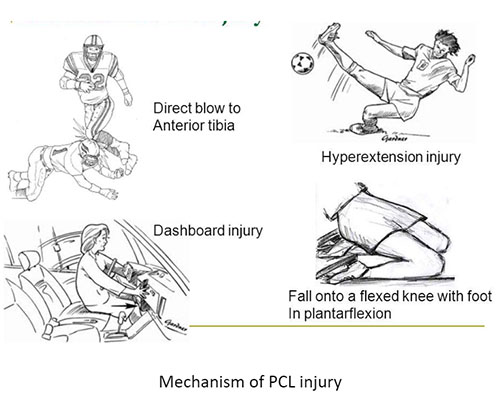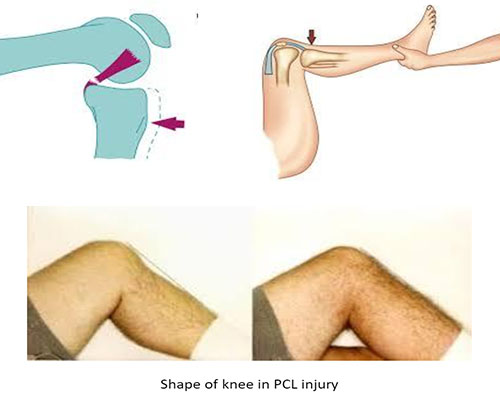PCL Injuries

Posterior Cruciate Ligament (PCL) injuries are not as common as an ACL injury. PCL tear happens when the knee is forcefully pushed back on a flexed knee. PCL injury is commonly seen in RTA (Road traffic Injury) and in Sports injury especially contact sports like Football and Wrestling. Due to the mechanism and the amount of force in a PCL tear, the incidence of injury to the other ligaments along with PCL is very high. The other major ligaments commonly injured along with PCL are Anterior Cruciate Ligament (ACL) or Posterior-Lateral Corner (PLC). Most common mechanism of injuries are fall on a hyperflexed knee with plantar flexed foot, hyperextension injury of knee, dashboard injury direct blow on the knee joint or landed on it when it is flexed in 900.
Acute symptoms are pain, swelling, inability to move the knee and walking. In chronic injury pain and instability is the common complain.
PCL prevents posterior sagging of tibia in relation to femur. This function gets lost in PCL deficient knees resulting in posterior sag in 900 positions of the knee. Unlike Anterior Cruciate ligament (ACL), the PCL ligament has a better healing potential, this is due to better blood supply. Hence not all PCL injuries need surgery. Acute Grade 1 to Grade 2 injuries can be managed conservatively but need a cast or a brace to keep the tibia from slipping posteriorly due to a non functioning ligament. A special brace must be worn for more than 3 months for the healing of the ligament. This protection of the PCL post injury is essential for optimal results.
PCL is a major stabilizer of the knee joint and has an essential function in anterior posterior and Rotatory stability of the knee joint. PCL injury, especially chronic one, needs surgical intervention. The surgery for the PCL ligament is a reconstruction of the PCL with tendon grafts similar to the ACL reconstruction. PCL Reconstruction is performed arthroscopically but technically more challenging.

